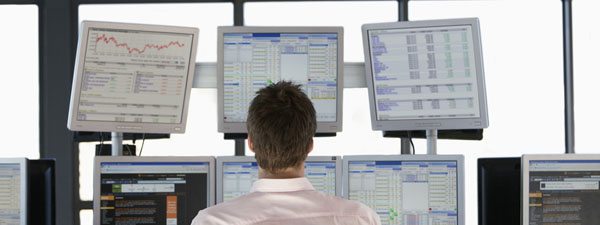You know a topic is trendy when the Wall Street Journal covers it, so when blogger Jack Marshall tackled the topic of media trading desk advertising, he employed a unique slant: advertisers, it seems are questioning how this system works because they’re not comfortable pouring money into programmatic media buying systems they don’t fully understand– even when the price is right. If you’re asking the same questions, the Association of National Advertisers’ (ANA) has published a lengthy white paper on the subject; if you’re just looking for an overview, this article can help.
Nuts and bolts.
A trading desk is a microcosm within an advertising agency that specializes in purchasing media in real time rather than pre-ordering it in advance. Some compare the function of the trading desk to the stock exchange: staff shops, executes and optimizes multi-channel digital advertising buys in an efficient, streamlined manner so cost savings are substantive, mechanics are effortless and software used to handle transactions are the key to efficiency. According to Forrester Research, the trading desk is a “centralized, service-based organization atop a licensed demand-side platform,” but if you’re not into the pedantic lingo use the stock market analogy to understand how buyers and sellers work ad sale deals.
History, please.
Unlike other technological milestones, trading desk advertising doesn’t have defined roots. The first ventures into online media buying took place in 2007 or 2008 as responses to accelerating costs associated with delivering and buying digital rather than traditional media. The tools were there. The technology was there and the need for cost and project efficiency was extreme. Once trading desk advertising began generating industry buzz, the workload and complexities tied to “operations-heavy” environments simply vanished. Early tests were startling: Google, Yahoo and other auction-based heavy hitters launched real-time media transactions and the practice of digital advertising buys was established.
Is it worth a look-see?
You bet. Clients and client representatives have an opportunity to control more of the ad buy process than ever; they can make better decisions about where to spend advertising dollars and make more informed judgment calls about their long-term ad plans. Clients can avoid placements that position their ads in close proximity to competitors. Customization, adjusted to different mediums, is more fluid. Benefits also include waste reduction and margin shifts from agencies to clients. In addition, trading desks are fast becoming magnets for new digital media talent as clients demand better targeting, algorithm and bidding capabilities. Data analyses are deeper and richer thanks to overall integration and consistency of services. Finally, the media trading desk is capable of delivering better return on investment (ROI).
So, is it perfect?
Not exactly. Ad trading desks can leave advertisers feeling insecure because ad agencies controlling them can wield power and steer media buys toward their own self-interest (often referenced as internal or sister-company deals). Insecurities may arise when clients feel their money isn’t being spent in their best interest and is instead spent in the ad agencies’ interest so the agencies build larger books of business and have the ability to inflate their client lists. With the growth of the trading desk has come criticism; not all of which is exaggerated. The ANA lists lack of transparency, double client payments (e.g., both the agency and trading desk profit), conflicts of interest—the aforementioned desk acting as agent and buyer while brokering deals—plus marked-up media costs that aren’t always Kosher. Further, some agencies get rebates that clients have no clue are being levied.
Is this a great concept muddled by too much bureaucracy and greed? Perhaps. Online media buying is a clever and timely concept, but operational challenges and power struggles could be this phenomenon undoing.
Sarah Smith has been using My Media Trading Desk to complete her online and programmatic media buying.
